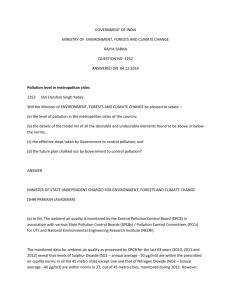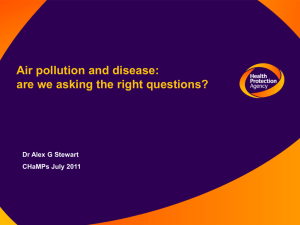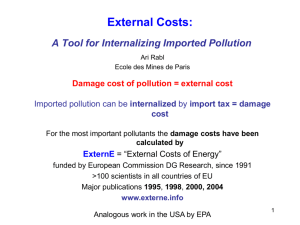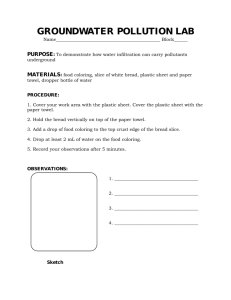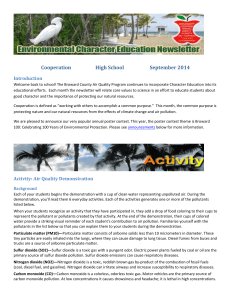E.ES.07.42 Fall 08a
advertisement
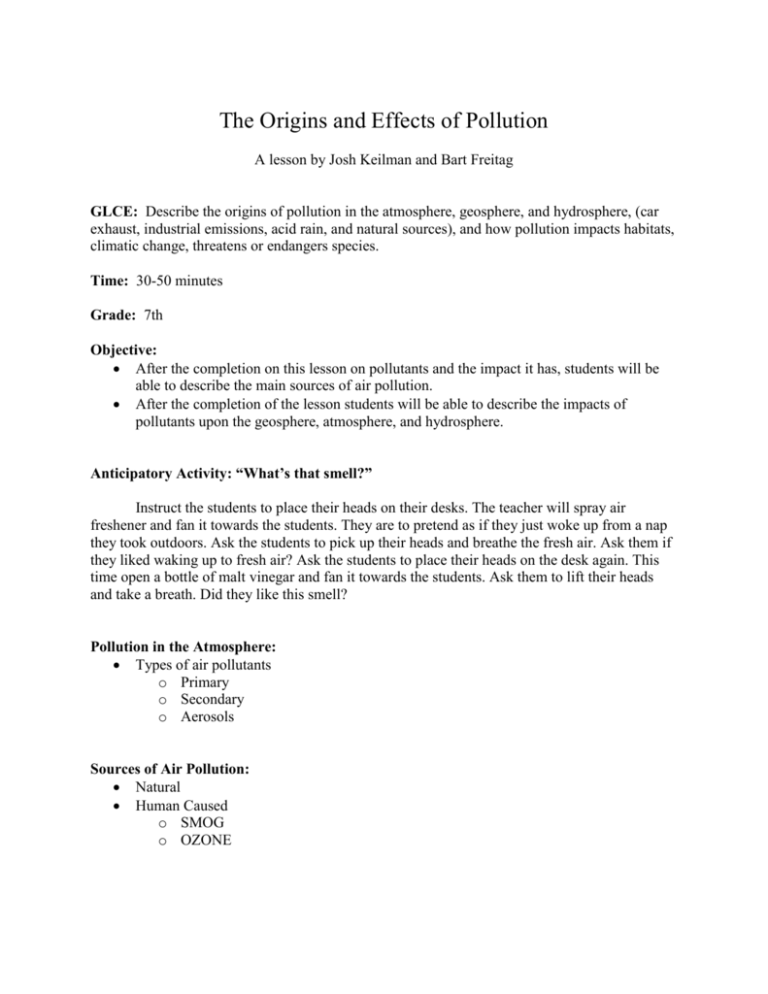
The Origins and Effects of Pollution A lesson by Josh Keilman and Bart Freitag GLCE: Describe the origins of pollution in the atmosphere, geosphere, and hydrosphere, (car exhaust, industrial emissions, acid rain, and natural sources), and how pollution impacts habitats, climatic change, threatens or endangers species. Time: 30-50 minutes Grade: 7th Objective: After the completion on this lesson on pollutants and the impact it has, students will be able to describe the main sources of air pollution. After the completion of the lesson students will be able to describe the impacts of pollutants upon the geosphere, atmosphere, and hydrosphere. Anticipatory Activity: “What’s that smell?” Instruct the students to place their heads on their desks. The teacher will spray air freshener and fan it towards the students. They are to pretend as if they just woke up from a nap they took outdoors. Ask the students to pick up their heads and breathe the fresh air. Ask them if they liked waking up to fresh air? Ask the students to place their heads on the desk again. This time open a bottle of malt vinegar and fan it towards the students. Ask them to lift their heads and take a breath. Did they like this smell? Pollution in the Atmosphere: Types of air pollutants o Primary o Secondary o Aerosols Sources of Air Pollution: Natural Human Caused o SMOG o OZONE Activity: “How do you pollute?” For this activity, each student will need a cup of water and some food coloring. At the front of the room, the teacher will have a large bowl filled with clean, clear water. This will represent a clean environment. Next, the teacher will ask the students a series of random questions. These can be changed to modify for age or preference, but a sample question could be “Did you take a shower today?” If the students answers yes, they are to put a drop of food coloring into their cup. After the teacher has finished with his or her questions, the students will come up to the front of the room, one by one, and dump their cups into the large bowl. This is a great way for students to visually see not only how the environment gets polluted, but also how we as individuals can contribute to this pollution. Materials: Fabric softener and malt vinegar Food coloring, clear containers for groups, large clear container References: http://www.carolina.com/category/teacher+resources/classroom+activities/air+awar eness.do?page=2 Ahrens, Donald.Essnetials of Meteorology. 5th edition, CA: Thomson, 2008 http://www.ohiocitizen.org/campaigns/coal/acid_rain_woods1.jpg http://i74.photobucket.com/albums/i263/Kimalita/statues_acidraineffects.gif BLUE- VOC’s emitted by soap, shampoo, deodorant, hair spray, perfume, and fingernail polish. Yellow- CO, NO2, PM10, and SO2 emitted by combustions used to heat the water for the shower Red- CO, NO2, PM10, SO2 and VOC’s emitted by the engine in your school bus or car Green- CO, NO2, PM10, SO2 and VOC’s emitted by your lawnmowers engine.

